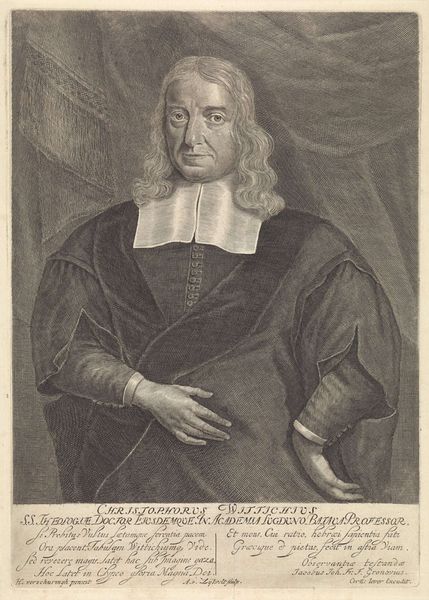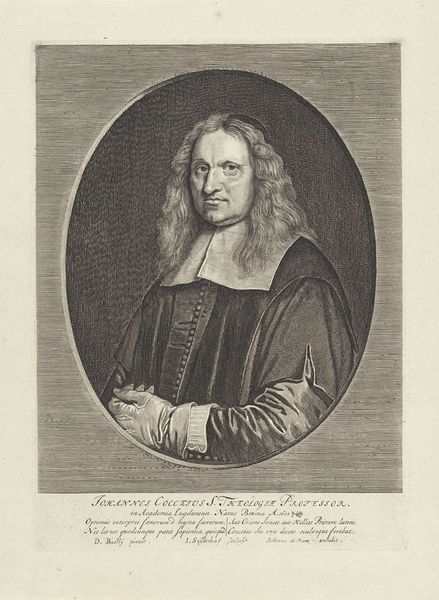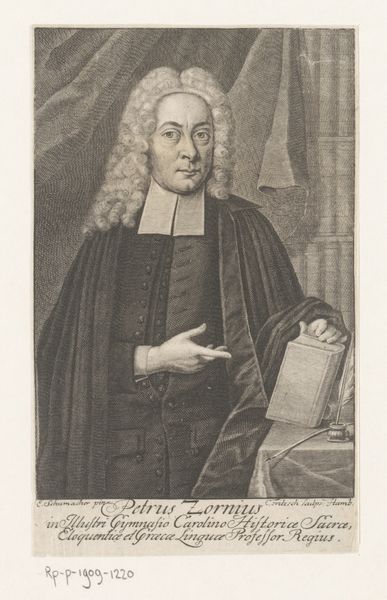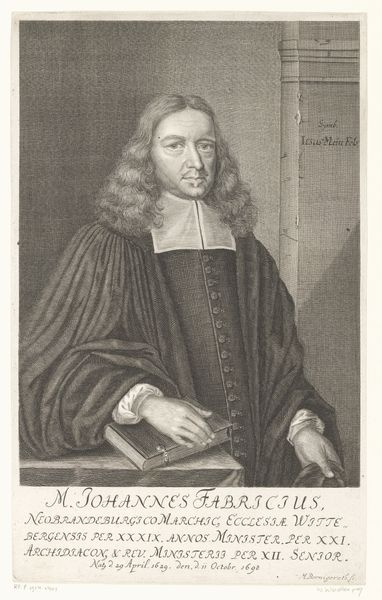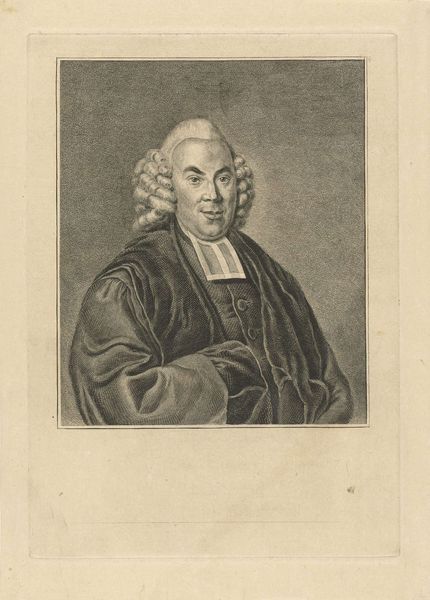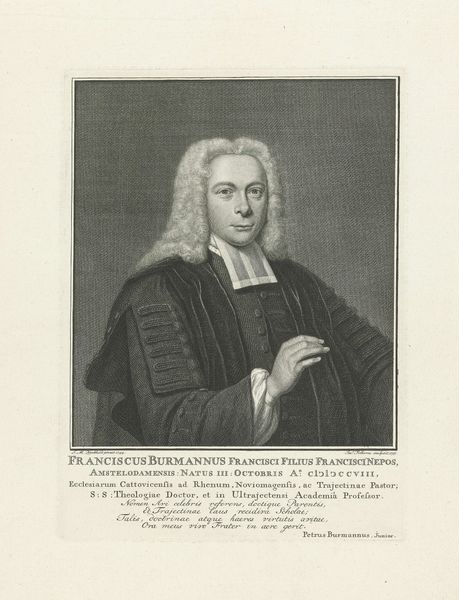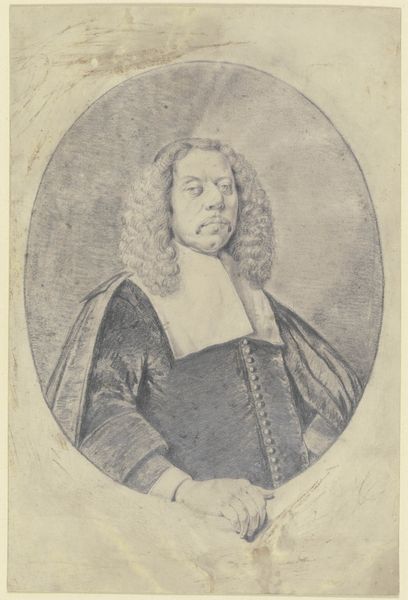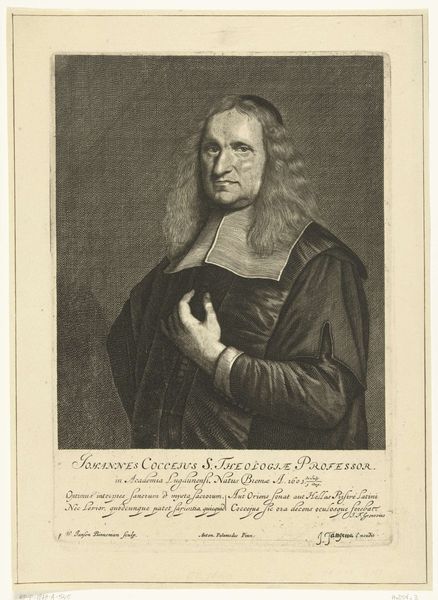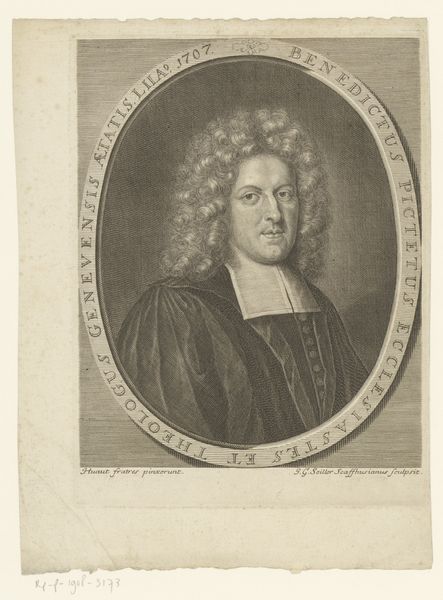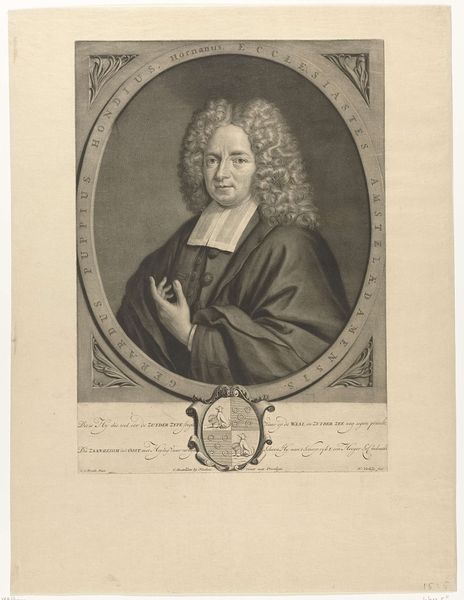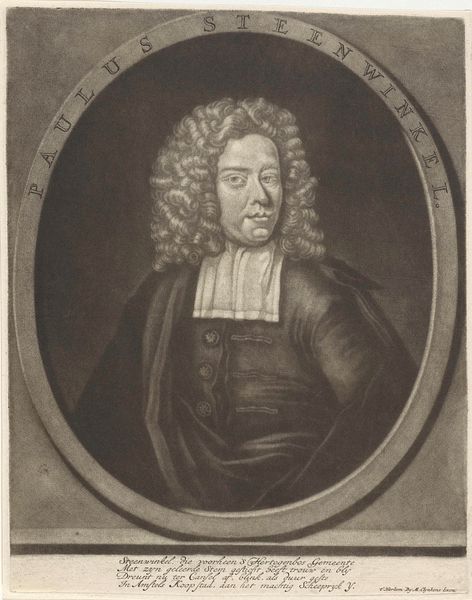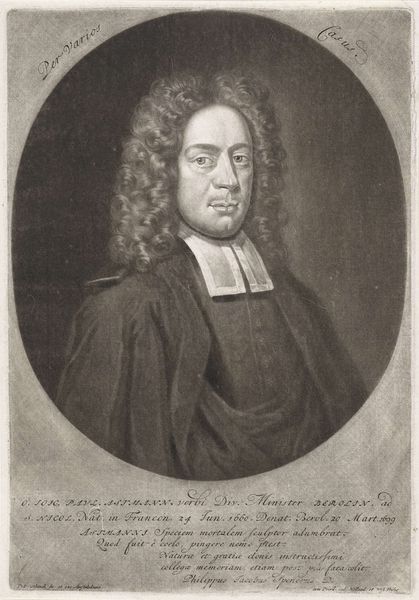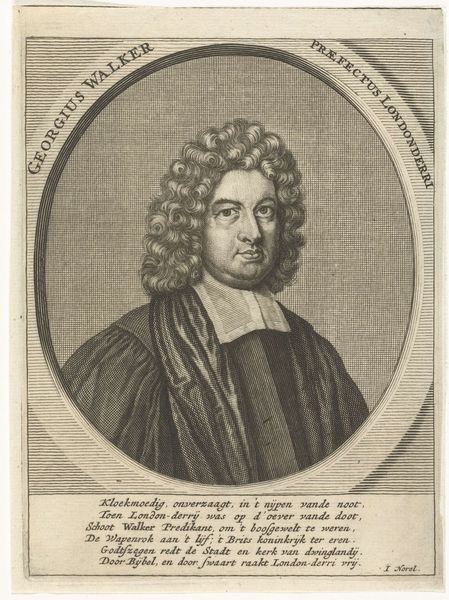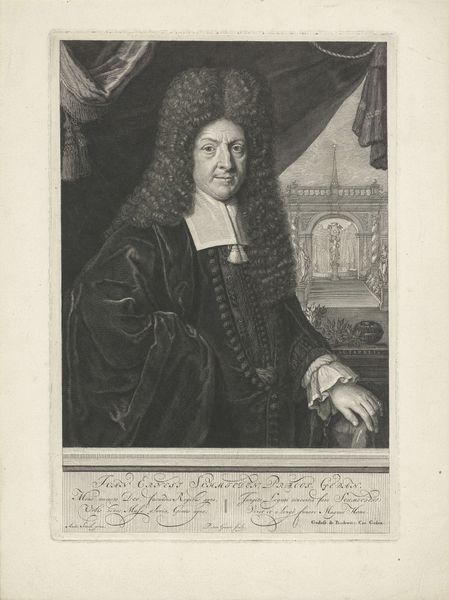
Dimensions: height 282 mm, width 218 mm
Copyright: Rijks Museum: Open Domain
Editor: Here we have a portrait of Johannes Fredericus Gronovius, created around 1917, housed here at the Rijksmuseum. It's an engraving and feels very traditional, almost stately. How do you interpret this work? Curator: This portrait offers us a window into the intellectual elite of its time, doesn't it? We see Gronovius, a professor, presented with a certain formality, but I'm curious about what isn't immediately visible. Think about the role of academics like him in shaping societal narratives. How did their perspectives influence the power structures and dominant ideologies of their era? Editor: That's a good point. The text at the bottom gives us a hint, mentioning his connection to Hamburg and Leiden. But what does that really mean for understanding his place in society? Curator: Exactly! Consider the universities themselves as sites of both knowledge production and social reproduction. Who had access to education? Whose voices were amplified? And, importantly, whose were silenced? Thinking critically about these factors can reveal much about the power dynamics at play. The Baroque style, often associated with grandeur and authority, further underscores this. It wasn't just about depicting an individual; it was about reinforcing a particular social order. Editor: So, you're saying it's not just a portrait of a man, but a reflection of the system that empowered him? Curator: Precisely. And by questioning that system, by examining its exclusions and biases, we can gain a deeper understanding of both the art and the society that created it. What stories remain untold in the face of these stately portraits? Editor: I never really thought about portraits in that way. Thanks, I'll definitely be considering these social contexts going forward. Curator: It's about seeing art as more than just aesthetic objects, but as active participants in shaping our understanding of the world.
Comments
No comments
Be the first to comment and join the conversation on the ultimate creative platform.
